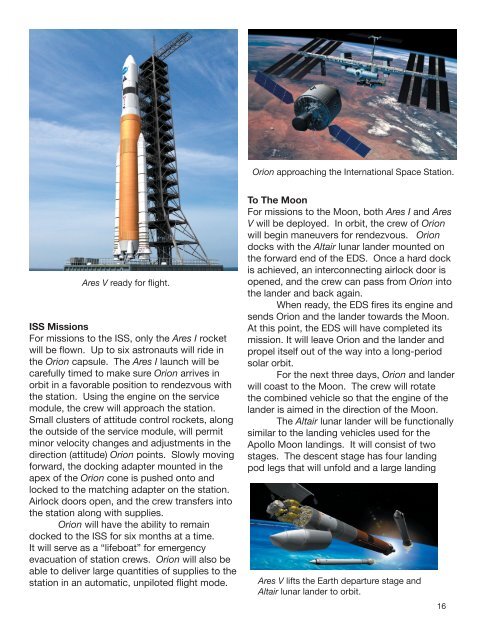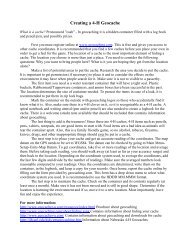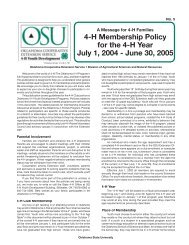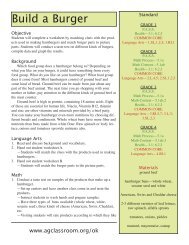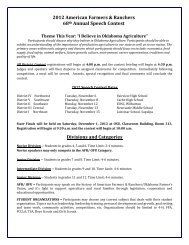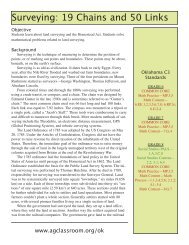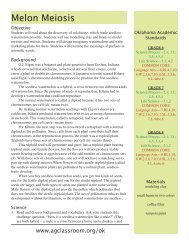You also want an ePaper? Increase the reach of your titles
YUMPU automatically turns print PDFs into web optimized ePapers that Google loves.
Orion approaching the International Space Station.<br />
Ares V ready for flight.<br />
ISS Missions<br />
For missions to the ISS, only the Ares I rocket<br />
will be flown. Up to six astronauts will ride in<br />
the Orion capsule. The Ares I launch will be<br />
carefully timed to make sure Orion arrives in<br />
orbit in a favorable position to rendezvous with<br />
the station. Using the engine on the service<br />
module, the crew will approach the station.<br />
Small clusters of attitude control rockets, along<br />
the outside of the service module, will permit<br />
minor velocity changes and adjustments in the<br />
direction (attitude) Orion points. Slowly moving<br />
forward, the docking adapter mounted in the<br />
apex of the Orion cone is pushed onto and<br />
locked to the matching adapter on the station.<br />
Airlock doors open, and the crew transfers into<br />
the station along with supplies.<br />
Orion will have the ability to remain<br />
docked to the ISS for six months at a time.<br />
It will serve as a “lifeboat” for emergency<br />
evacuation of station crews. Orion will also be<br />
able to deliver large quantities of supplies to the<br />
station in an automatic, unpiloted flight mode.<br />
To The Moon<br />
For missions to the Moon, both Ares I and Ares<br />
V will be deployed. In orbit, the crew of Orion<br />
will begin maneuvers for rendezvous. Orion<br />
docks with the Altair lunar lander mounted on<br />
the forward end of the EDS. Once a hard dock<br />
is achieved, an interconnecting airlock door is<br />
opened, and the crew can pass from Orion into<br />
the lander and back again.<br />
When ready, the EDS fires its engine and<br />
sends Orion and the lander towards the Moon.<br />
At this point, the EDS will have completed its<br />
mission. It will leave Orion and the lander and<br />
propel itself out of the way into a long-period<br />
solar orbit.<br />
For the next three days, Orion and lander<br />
will coast to the Moon. The crew will rotate<br />
the combined vehicle so that the engine of the<br />
lander is aimed in the direction of the Moon.<br />
The Altair lunar lander will be functionally<br />
similar to the landing vehicles used for the<br />
Apollo Moon landings. It will consist of two<br />
stages. The descent stage has four landing<br />
pod legs that will unfold and a large landing<br />
Ares V lifts the Earth departure stage and<br />
Altair lunar lander to orbit.<br />
16


